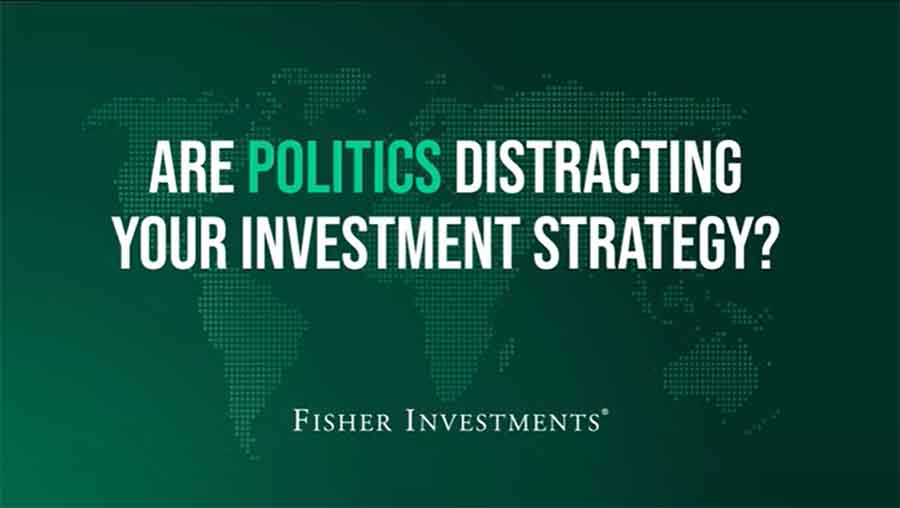Personal Wealth Management / Market Volatility
Breathe … and Put Recent Swings in Proper Perspective
Bear markets start with a whimper, not a bang.
Shuddering sentiment sent stocks reeling again on Monday, bringing the drop since July 16’s high to nearly -8% on the S&P 500 as we type—a bit less of a decline for world stocks.[i] Both are within striking distance of the -10% mark that would officially make this move a “correction.”
However, that is a distinction without much meaning, in our view. The key is the same: Stay calm. Reacting to volatility, especially such sharp swings, is usually a mistake—a potentially costly one at that. We see little here to suggest this is a bear market in the offing, and corrections come and go so swiftly that timing them is a folly.
We often counsel readers that volatility erupts without warning—often cutting both ways—because sentiment can shift on a dime. Markets are living this now, with moods on the US economy and central bank moves shifting wildly as stocks flipped late last week from a big up day Wednesday to sizable drops Thursday, Friday and Monday. Such swings are uncomfortable, maybe even unsettling. But when they strike, it is vital to step back, take a deep breath, and survey whether anything really, fundamentally changed.
We are always wary of ascribing daily moves to any one cause. Sometimes there is an obvious culprit. And sometimes headlines just find a post-hoc reason to justify whatever shook out from the millions of trades moving markets daily. But in general, headlines pinned the sharp slide first on the Bank of Japan’s (BoJ’s) rate hike, then on Friday’s US jobs report and the Fed’s decision not to cut rates Wednesday. Oddly, headlines Wednesday called the Fed’s decision a big positive, cheering head Jerome Powell’s strong hints of a September rate cut. Many credited it for stocks’ nice Wednesday, even though the S&P 500’s rise that day preceded his comments. But with hiring slowing and the unemployment rate up—and Thursday’s manufacturing purchasing managers’ indexes negative again—US economic sentiment shifted rapidly to worries the Fed is behind the eight ball.
Sentiment toward Japan’s move shifted similarly fast. On Wednesday, the day of the rate hike, headlines were pretty sanguine about it, noting Japanese stocks’ big rise that day and theorizing that the strengthening yen would help ease Japan’s economic headwinds. But Japanese stocks have tumbled, falling more than -10% on Monday alone and breaching -20% (in yen) cumulatively since the MSCI Japan’s July 11 peak.[ii]
Headlines pinned it on markets rapidly adjusting to a stronger currency, arguing this is a big headwind for exporters, tourism-reliant companies and property firms. When stocks outside Japan fell, too, analysts also blamed the yen. Japanese investors were yanking overseas investments, they claimed, to reduce their currency risk. And international investors were allegedly unwinding the carry trade—where they borrow in yen to invest outside Japan, profiting off currency movement as well as market returns—sparking a vicious cycle of forced selling as currency moves and market volatility fueled each other.
This is probably happening, to a degree. But we wouldn’t overstate the long-term effect. For one, while the yen has strengthened this week, it still trades at levels seen in January—which everyone bemoaned as 40-year lows. Little has actually shifted, if you zoom out more than myopic headlines do. Carry trades and overseas investments placed two weeks ago might be out of the money and sparking panic, but longer-term ones aren’t in anywhere near as much jeopardy, so we question how much forced selling is really in the offing. Then, too, money flows to the highest-yielding asset. Even with the rate moves, that isn’t Japan—its short- and long-term interest rates remain well behind the US, UK and eurozone nations. So to us, this looks primarily like a sharp sentiment reset.
As for claims US stocks are rapidly pricing in a mounting risk of recession as the labor market deteriorates and the Fed delays, we are sensing a bit of a chicken/egg thing. That is: Would headlines be in this much of a panic over one jobs report if stocks weren’t already taking a hit? We can see a strong case for the volatility coloring everyone’s view, especially when we dig into the report.
See for yourself: Nonfarm payrolls rose by 114,000 in July, slowing from June’s 179,000 and missing expectations for 175,000.[iii] More troubling, according to most commentary, was the unemployment rate’s uptick from 4.1% to 4.3%.[iv] With more people out of work, the story went, it is clear higher interest rates are taking a toll and the Fed is moving too slowly. Given monetary policy moves hit the real economy at a lag, some coverage claimed it may already be too late and recession inevitable.
But the unemployment rate is open to interpretation. It can rise for bad reasons, yes, if it is up because more people are out of work. But that isn’t what happened in July. The Household Survey, whose data underpin the unemployment rate, showed a 67,000-person increase in total employment.[v] The unemployment rate rose because the civilian labor force rose even more, by 420,000 people.[vi] That outstripped the 206,000-person growth in the general civilian population, inching the labor force participation rate back up to 62.7% from June’s 62.6%.[vii] So it looks to us like a strong economy continued attracting more workers.
At the same time, while the Fed focuses on the labor market as part of its dual mandate, jobs data aren’t predictive. Businesses’ hiring (and firing) decisions result from the economic trends in the months preceding them. They hire when they have reached the limit of boosting output with their current headcount and have to add in order to keep up with demand. They shed workers, usually very reluctantly, when trouble is deep enough and entrenched enough that they have to reduce overhead. Hence, labor market moves are a late-lagging economic indicator. They confirm the trends other data (e.g., GDP, retail sales, industrial production, etc.) showed in the months preceding them. Stocks, meanwhile, pre-price expected events 3 – 30 months out, including economic developments. So whatever July’s jobs report shows, stocks already lived through and priced it.
Therefore, setting aside the jobs report: Have economic drivers changed meaningfully in recent weeks? We don’t think so. As we covered at the time, GDP accelerated in Q2. While base effects flattered consumer spending, business investment’s acceleration shows a more offensive Corporate America—not companies withering in the face of high rates. Durable goods’ orders’ -6.7% m/m drop in June doesn’t contradict this, as it stems primarily from the always-volatile commercial aircraft industry. The more meaningful metric, nondefense capital goods orders excluding aircraft, rose 0.9%.[viii] The contractionary manufacturing PMIs aren’t great but also aren’t new. The Institute for Supply Management’s has been in contraction since April … and for much of the past two and a half years. If that didn’t cause a recession before, we aren’t sure why it would suddenly do so now. Especially when services, S&P Global’s and ISM’s July PMIs, are growing at a very nice clip. Manufacturing may get the headlines and be more relatable, but services is nearly three-fourths of GDP.[ix]
We aren’t dismissing the risk of the Fed being too slow on the uptake. Historically, that is typical. Rate cut cycles are usually a delayed response to a deteriorating economy. So from our standpoint, rate cut hopes were always a matter of be careful what you wish for. But for now at least, we don’t see credible evidence this is the case.
To us, this all just looks like a big sentiment shakeout: sharp, short-term and stunning, classic correction traits. It is resetting folks’ expectations lower in a hurry. This is the opposite of how bear markets usually begin. Bull markets die with a whimper, not a bang. Bear markets lull investors to sleep with long, rolling tops, packing big volatility into the late stages. We are talking about an -8% slide from a high in 14 trading days.[x] That is a bang out of the gate. It isn’t escaping many folks’ notice, based on professional reaction and newsflow. Such moves usually reverse fast.
In the moment, it is jarring. But there is a silver lining: Sudden negativity helps reset sentiment and expectations, rebuilding some of the bull market’s wall of worry. It is a normal, even healthy development in a bull market.
Trying to time the start and end of such swift sentiment swings is a folly. Before you react to the swings you see, take a breath. Step away. Take the time to remember investing decisions should always be forward-looking, planful, business decisions. In other words, remember what you already know: Selling on fear is not a strategy.
[i] Source: FactSet, as of 8/5/2024.
[ii] Source: FactSet, as of 8/5/2024. MSCI Japan return with dividends, in yen, 7/11/2024 – 8/5/2024.
[iii] Ibid.
[iv] Ibid.
[v] Source: Bureau of Labor Statistics, as of 8/5/2024.
[vi] Ibid.
[vii] Ibid.
[viii] Source: FactSet, as of 8/5/2024.
[ix] Ibid.
[x] Ibid.
If you would like to contact the editors responsible for this article, please message MarketMinder directly.
*The content contained in this article represents only the opinions and viewpoints of the Fisher Investments editorial staff.
Get a weekly roundup of our market insights
Sign up for our weekly e-mail newsletter.

See Our Investment Guides
The world of investing can seem like a giant maze. Fisher Investments has developed several informational and educational guides tackling a variety of investing topics.





